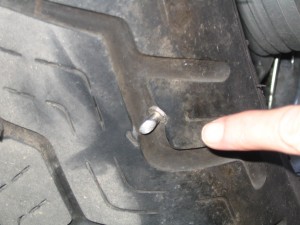10 Tips for a Routine Inspection
Our bikes carry the most precious cargo there is – us. Taking time for a routine inspection can make a big difference when it comes to safety and our enjoyment of the ride. No one wants to be stranded on the side of the road, or have an accident because of mechanical failure.
We know that we’re vulnerable on the road and that riding a motorcycle carries risk. We can do a lot to lessen that risk by making both we and our bikes are fit and ready to ride.
Pre-ride inspections confirm they’re worthy to carry us; checking them post-ride will catch any parts that may have come loose and we’ll be able to note minor changes before they become major problems.
Your best resource is your owner’s manual. Make these items part of your regular checks:
 Tires:
Tires:
- Pressure: Measure when tires are cold. Both the tire and motorcycle manufacturer will have specifications and in all likelihood, front and rear tires will be different.
- Tread: If you’re down to the wear bars, it’s time for new tires. Look for worn tread, uneven wear, cracks, bulges, cupping, and any foreign objects. The photo shows something we found at one of our workshops.
- Spokes: Uniformly tight and intact; they can be tightened with a spoke wrench. Rims need to be true with no dents.
- Drive System: Unless it’s electric, your bike will have either a chain, belt drive or drive shaft. Make sure chain tension is correct and that it’s well lubricated. Check drive belt for wear and tension; if you have a shaft drive, check fluid levels and that there are no leaks.
- Cables & hoses: No fraying or kinking; no binding when handlebars are activated.
- Fluid levels: Oil, brake fluid, transmission, and coolant. Refer to your owner’s manual for the correct way to assess. Make sure there are no leaks.
- Lights and electrics: Activate brake light with front and rear brakes independently; check front and rear indicators, horn, headlights – high and low beams.
- Throttle: Should snap back to home position.
- Brakes: – check brake pads for wear periodically. Test both front and rear to make sure they’re working satisfactorily.
- Side stand: Retracts firmly: no bending, cracks or damage; the spring is intact and the cut-out switch functions.
- Clutch and brake levers: Smooth operation, correct amount of free play and proper adjustment.
Bonus: Look in the mirror. Make sure that you are physically, mentally and emotionally fit to ride.
